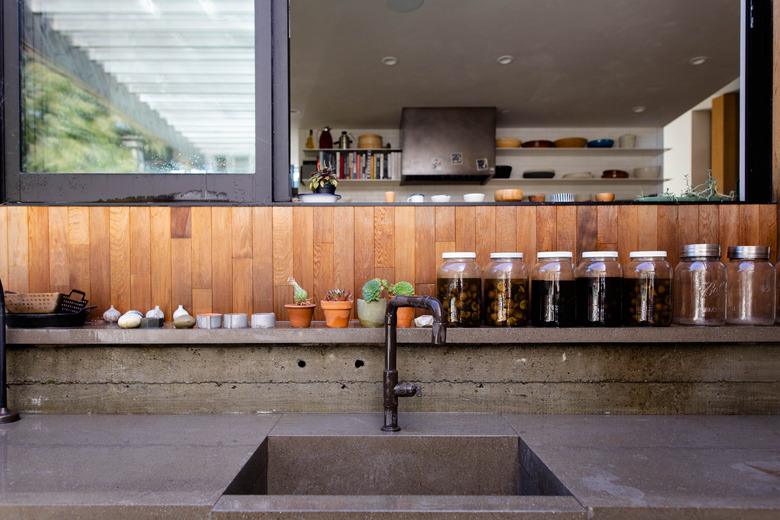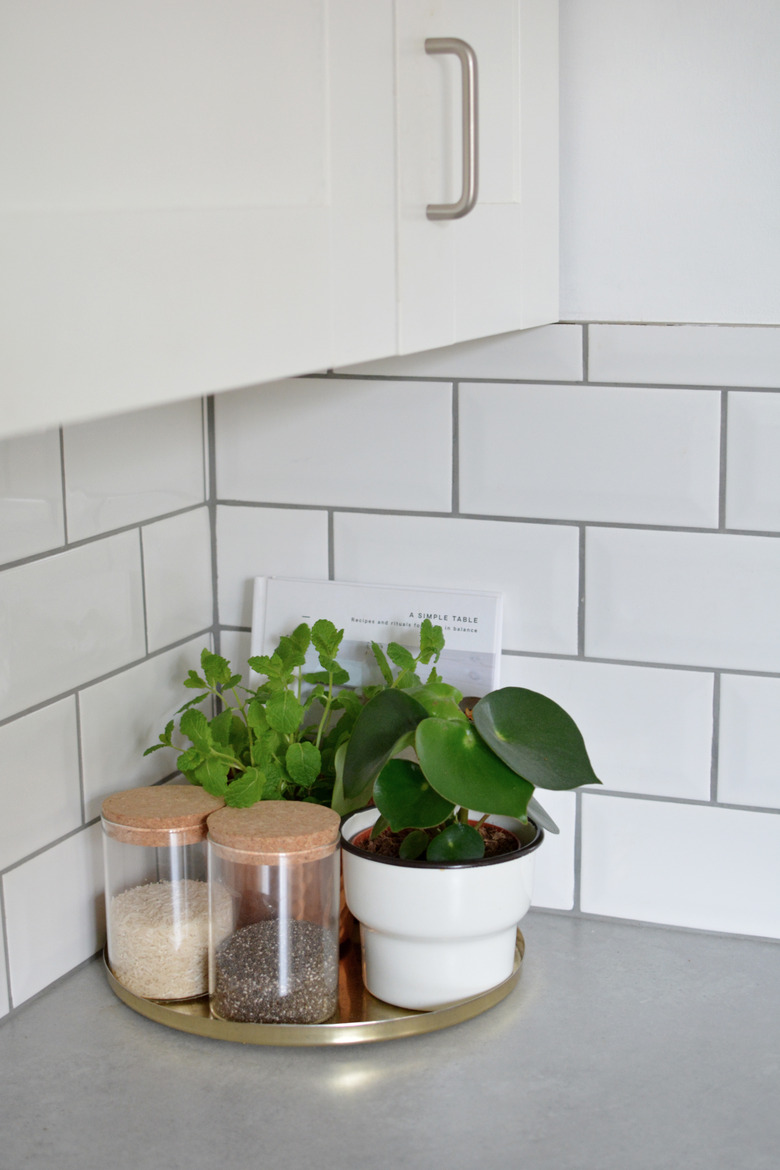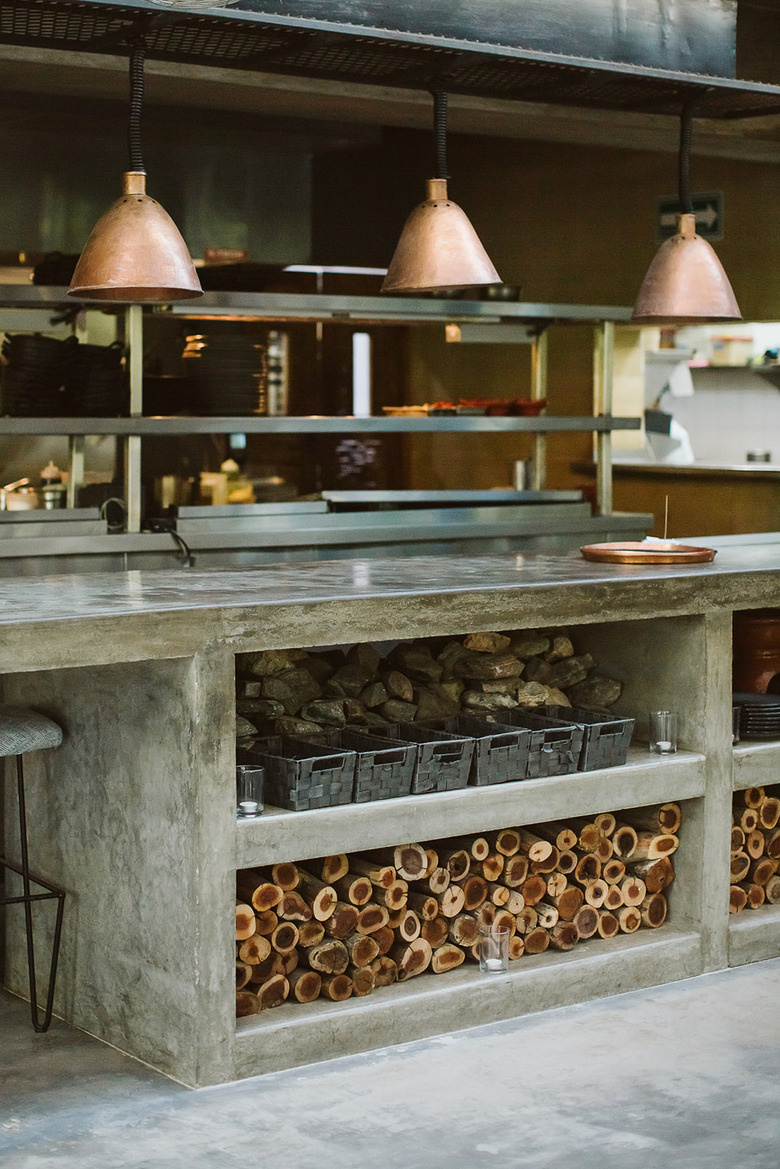Concrete Countertop Repair: A How-To Guide
Concrete countertops are rugged and durable, but they face the same limitations as concrete driveways and patios. Because concrete is porous, it requires that you apply a sealer to protect it. When the protective seal starts to wear, the concrete absorbs water and then dries out again, which causes cracks.
Indoors on a concrete counter, this process tends to occur around sinks and dishwashers where water is a frequent presence. Concrete kitchen countertops also tend to crack when exposed to heat for long periods of time. If, for instance, you frequently use a crockpot, your counter may crack where you usually set it. Like other countertop surfaces, concrete sometimes chips at the edge if you drop a dish onto it or otherwise apply undue pressure.
Fortunately, fixing concrete counters is a project most homeowners can tackle themselves. You may, however, want to call in a professional if you find yourself repeatedly repairing the same spot on your counter. This can indicate a structural issue that needs expert attention.
How to Fix Concrete Countertops With Epoxy
How to Fix Concrete Countertops With Epoxy
Epoxy is the easiest way to fix concrete countertops and is readily available. Simply stop by your local hardware store and purchase any repair kit designed for use on a stone countertop. Look for a kit that has both high- and low-viscosity epoxies. You'll use the low viscosity to repair the top of the counter and the stickier high viscosity when repairing dings and chips on the edge of the countertop.
While you're at the store, purchase some powdered concrete dye in the appropriate color for your countertop.
- Clean your countertop with soap and water. If there are oil stains on the counter, the Concrete Network recommends mixing a poultice of baking soda, powdered sugar or flour and acetone to a peanut-butter-like consistency. Apply the poultice, cover it with plastic wrap for 24 hours and then uncover the mixture and allow it to dry thoroughly before removing it.
- Add any dyes or pigments to the resin portion of your epoxy before adding the hardener. This gives you plenty of time to get the color right and to mix it well without having to work against the clock before the epoxy starts to harden.
- Add the hardener to the epoxy and mix it well. Do so in a disposable bowl with a plastic spoon to make cleanup easy.
- Smooth the epoxy into the chip or crack using a putty knife or the edge of a credit card. Get the epoxy as level as possible, overfilling the chip or crack rather than underfilling. You can use the epoxy to glue chips that came out of the edge of your counter if you still have the piece. If not, smooth the epoxy into the chip and shape it to the rest of the counter's edge as much as you can.
- Wait for the epoxy to set. Once it has, sand away any excess with 400-grit sandpaper.
- Reseal your countertop to protect the repaired area.
How to Fix Concrete Countertops With Cement Grout
How to Fix Concrete Countertops With Cement Grout
You may choose to use cement grout to repair damaged countertops, and this is the material countertop fabricators use to repair voids and pockmarks caused by bubbles in the concrete mix. Grout is also a smart choice if you're repairing an outdoor countertop since some epoxies yellow in direct sunlight. If you're repairing a small crack, however, you'll have to work a little harder to squeeze the grout into the crack than you would an epoxy.
To perform this repair, you'll still need to pick up some concrete dye powder at the hardware store. Instead of an epoxy repair kit, however, you'll need to buy one of two concrete grout products. If you're repairing the top of your counter, you'll need some vinyl concrete patch. For chips along the edge of the counter, purchase a small bottle of acrylic fortifier as well. The fortifier gives the grout a putty-like quality that makes it easier to shape so you can match your counter's contours more easily.
- Clean the countertop as you would when using epoxy for your repair.
- Add your concrete dye to a scoop of the concrete grout patch material and add water according to the package directions. Allow the grout to set and compare the color of the sample to that of your countertop. Keep experimenting, adjusting your dye color or quantity as needed.
- When you have your color right, prepare a batch of grout by adding the proper amount of dye and the amount of water directed on the grout package. If you're using the acrylic fortifier, add that to your mixture now according to the package directions.
- Spread the grout mixture onto your counter using a putty knife, credit card edge or a similar tool. When repairing cracks, apply pressure to the counter when applying the grout to force as much of it into the crack as you can. When using acrylic-fortified grout, you can use your fingers or another shaping tool to match your counter's edge. The smoother you get the grout now, the less sanding you'll do later.
- Allow the cement grout to dry and harden. According to Quikrete, concrete grout patches need at least 24 hours to cure. It may take longer during humid weather.
- Sand off any excess cement grout with diamond pads.
- Seal your countertop.
Tip
If you can't find the exact formula or dye color used on your concrete countertop, try sanding the bottom of the countertop and collecting the sanding dust. You can then add some bonder to the dust, making a spreadable paste. Using this paste to repair the countertop will give you a near-perfect color match.
A Word on Color Matching
A Word on Color Matching
Whether you're using epoxy or cement grout to fix your concrete countertops, you'll need to get the color right if you want your repair to blend. Doing so is the most difficult and time-consuming part of the repair. If you don't know exactly how much of what coloring products were used on your counter, you'll have to take a guess and experiment.
Start by taking a photo of your countertop and taking it with you to the hardware store. There you will find a variety of concrete pigments, stains and dyes in many different colors. Select and purchase the one that you think will match your counter or backsplash. Mix a batch of epoxy or cement grout with your chosen color and allow it to set.
When it has, apply your chosen concrete sealer to the sample and compare the color to your existing countertop. If it's a match, mix another batch of epoxy or cement and fix your counter. If it's not, head back to the hardware store and try again. Trial and error may not seem like the most efficient approach, but even professional concrete fabricators find themselves experimenting when they need to repair or touch up concrete surfaces.
References
- Concrete Network: How to Remove Oil Stains from Concrete Countertops
- Concrete Network: Fixing Hairline Cracks
- Concrete Decor: Troubleshooting Concrete Countertops: Tips from the Experts
- The Concrete Countertop Institute: How to Grout to Fill Pinholes in a Concrete Countertop
- Concrete Network: Repairing Chips in Countertops
- Super-Krete Products: Matching Old Concrete to New? Here's What to Do
- Quikrete: Vinyl Concrete Patcher


